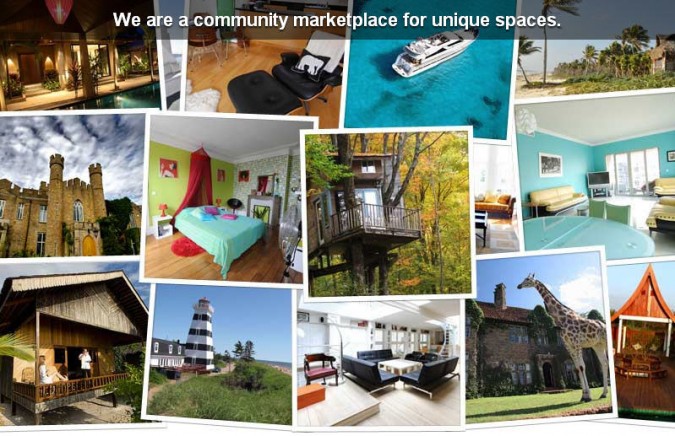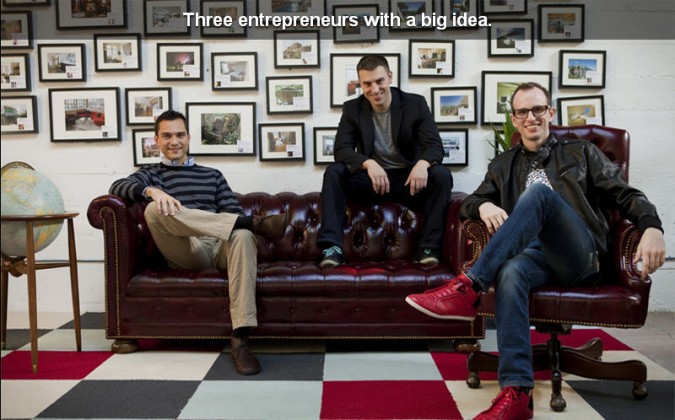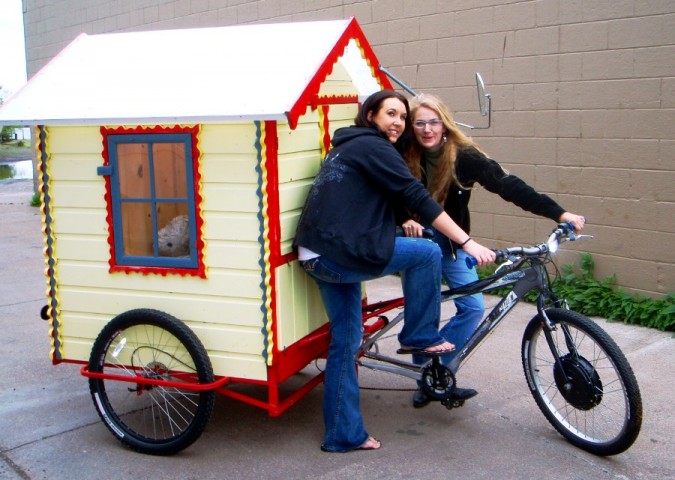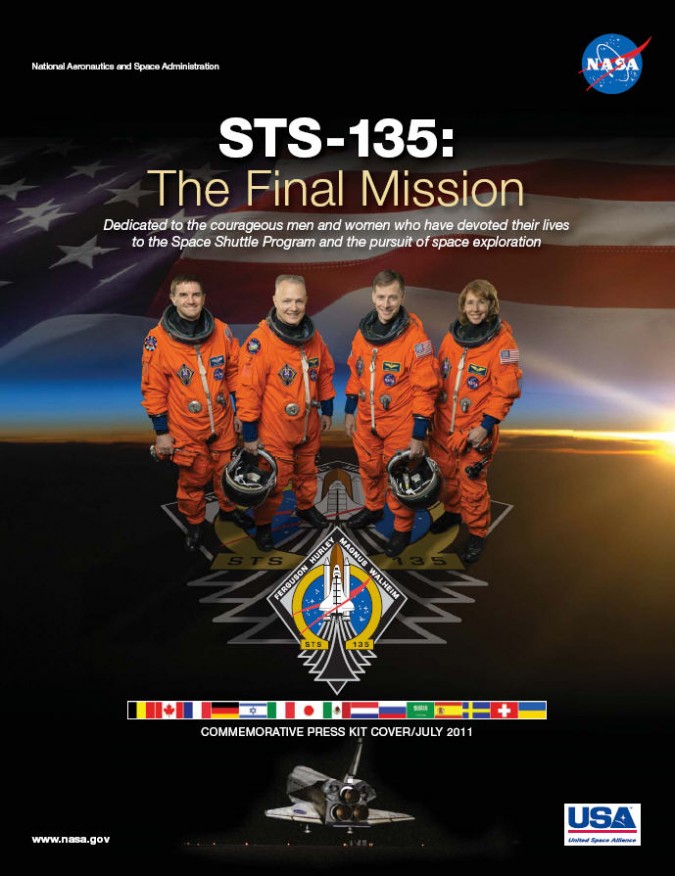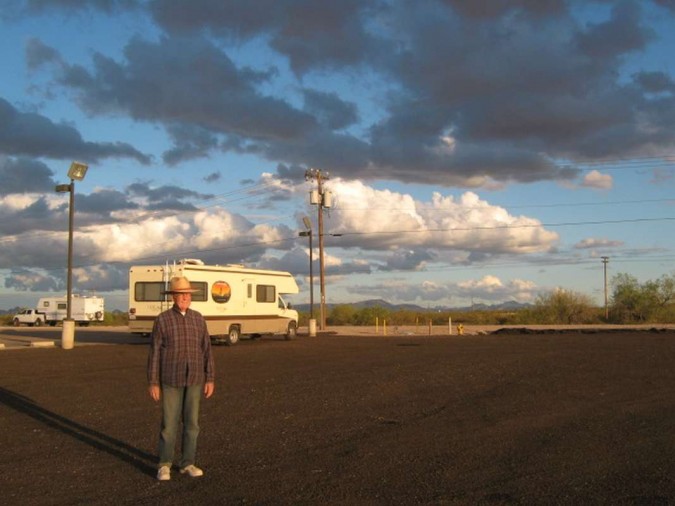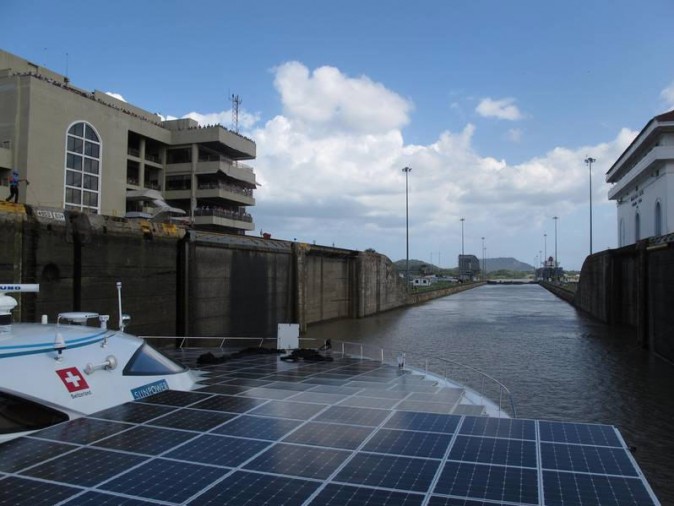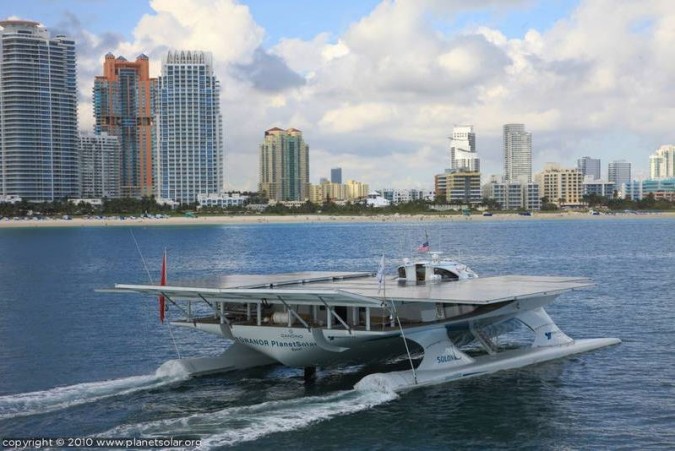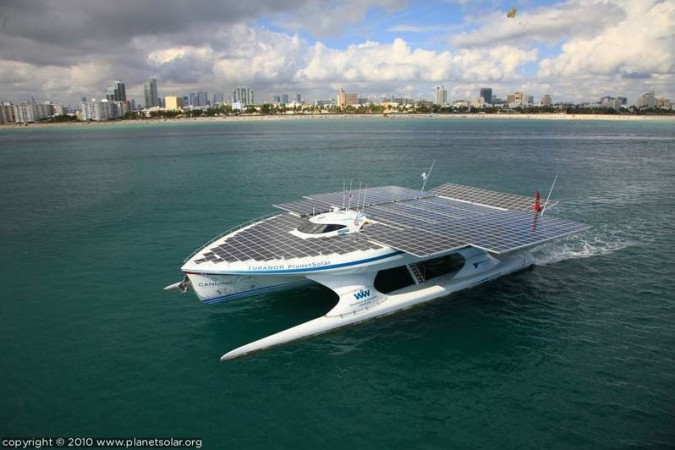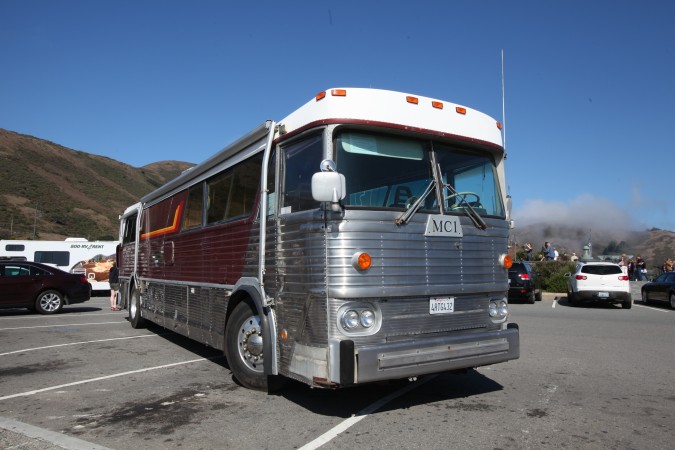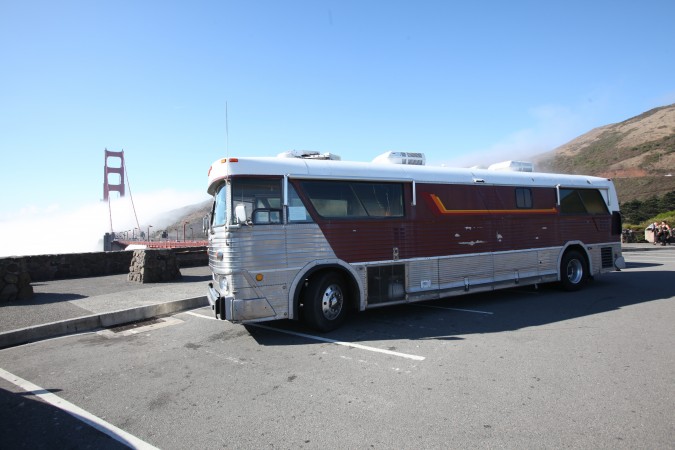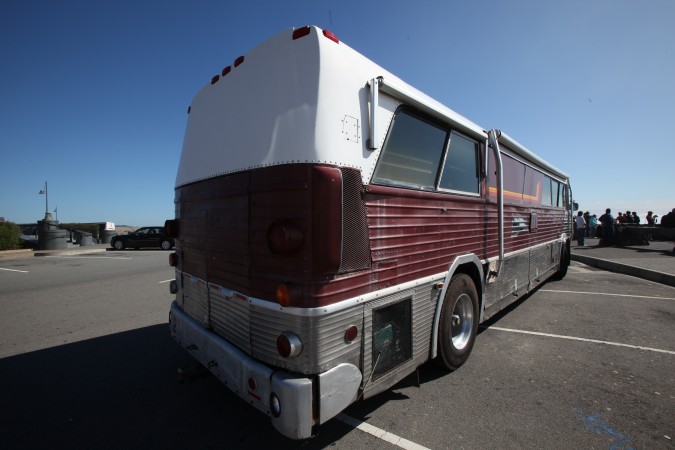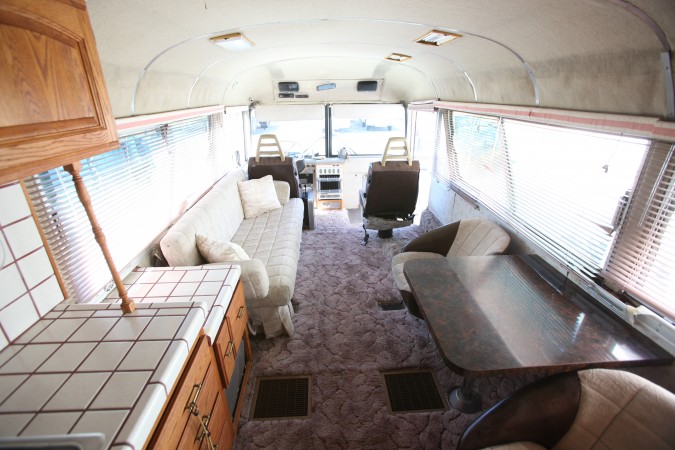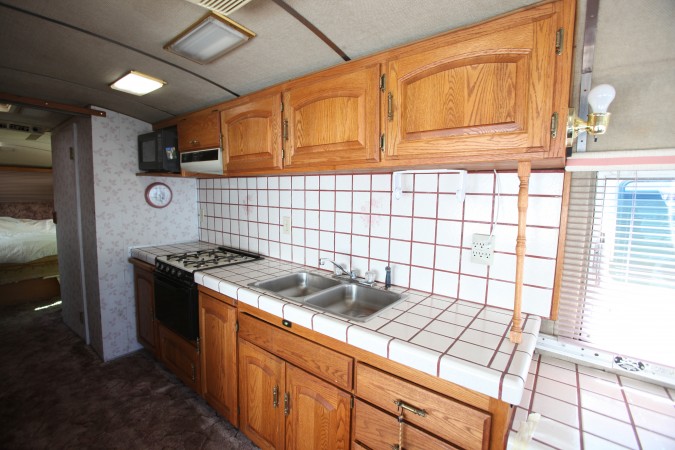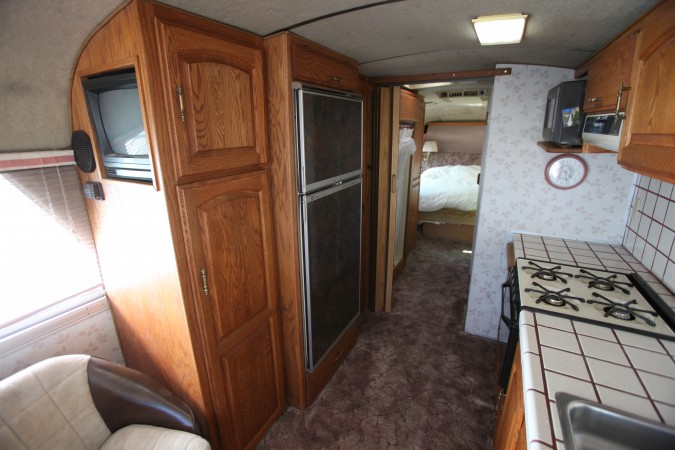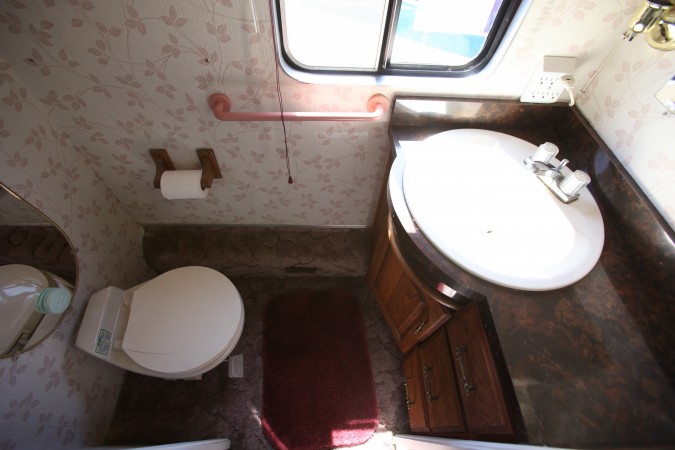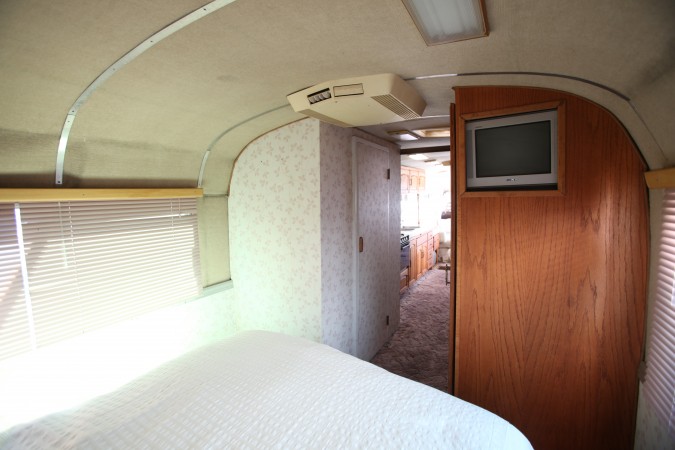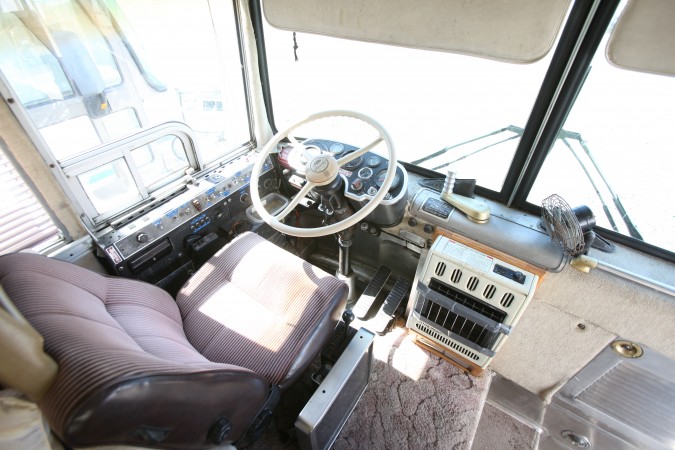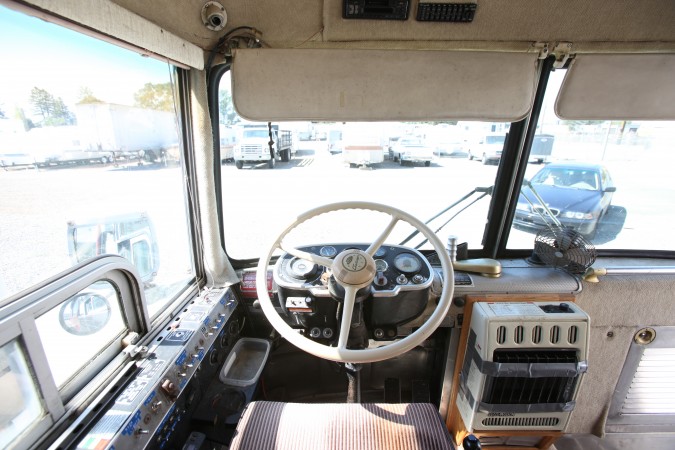Archive for the ‘Travel’ Category
Airbnb hosting is fun with minimal risk
Airbnb, formerly Air Bed and Breakfast, is in the news this week.
According to news reports like this one on TechCrunch.com, a host’s home was ransacked by a paid guest. Apparently this is the first time this has happened, even though Airbnb says their site has arranged over 2 million nights of stays.
If this is the worst that’s happened in 2 million nights, that sounds like a better record than hotels and motels likely have. I suspect that the rate of guests being actually attacked in a hotel is higher than 1 in 2,000,000, though I have no facts to back up that hunch.
There is controversy about what happened, with Paul Graham, the founder of Y Combinator saying the host may be lying. I don’t know what did or didn’t happen, and I’m not taking sides here.
Here are some more links to stories about the controversy:
The Airbnb Horror Story Continues
On Safety — A Word from Airbnb
Airbnb Responds to User Horror Story
I will share my experience with Airbnb below.
I was an Airbnb host in 2009. I made about USD $800.
I offered the living room in my detached San Francisco house at USD $40.00 per night. I had a lot of takers, and I absolutely loved being a host. It was a highlight of that year. I got to meet so many interesting travelers, including guests from France, Czech Republic, Austria, Japan, Oklahoma and even San Francisco.
I never felt unsafe even though I hosted groups as large as four people.
I increased my feeling of safety by installing an electronic deadbolt. I assigned a new door code for each guest or group of guests, and I deleted the code when they departed. So nobody retained access to my house after their visit.
I also made a copy of the government issued identification documents of each guest, and I locked these copies in a safe and scanned them and emailed them to myself. So even if a guest burned down my house, I would be able to give the authorities copies of the IDs of my guests.
I would guess that the person who allegedly had their apartment ransacked didn’t make a copy of the ID of their guest. I think AirBNB should instruct hosts to do so. After all, hotels and motels in the US are required to ask to see your ID, so guests are trained to not think anything of such a request. I’ve been asked for my passport at all the hotels, motels and youth hostels I’ve stayed at outside of the US, so I suspect there is a law requiring such requests almost worldwide.
I suspect that people are less likely to ransack a place after they’ve had their ID copied by the host.
One of the most interesting guests I had in 2009 was a guy who arrived by motorcycle from his San Francisco apartment. He stayed the night but didn’t shower in the morning. He went home for that, I guess. Why did he stay here, alone?
Airbnb was considering hiring him, and part of the hiring process required that applicants try the service. He was very talkative, and since we were both in the Internet field, we had a lot to talk about. I recall Airbnb had fewer than 10 employees at the time. I could tell Airbnb was a great company on its way up, up, up. What a business model — I recall they collect 20% of the rental price for playing matchmaker and escrow agent.
According to recent news reports, Airbnb recently closed a USD $112 million dollar venture capital investment at a valuation of USD $1,300,000,000 (sic). If that guy that stayed with me for a night got hired, he’s likely now worth millions on paper. I’m happy for him.
Here are some links to articles about Airbnb:
AirBNB Could Have More Rooms than Hilton by 2010
My Ultimate Bachelor Pad on AirBNB
I know two people who used Airbnb to book a multinight stay in an apartment in Paris, France. They got the entire place to themselves. I saw pictures and the home was charming and simply lovely. There was no elevator and there were six flights of spiral stairs to climb, but I bet those stairs made the place particularly memorable for the travelers. I am not criticizing Airbnb or Paris for the stairs. I really believe that charming old buildings help their occupants form strong memories. It was probably a pain to lug suitcases up six flights of stairs. But as those memories fade, I believe the fond memories of the apartment will remain, and that even 50 years from now those travelers will fondly remember their cute Paris apartment, but they won’t remember any of the corporate hotels they stayed at back then, no matter how costly or opulent.
I was inspired to become an Airbnb host by my brother Andrew Warnock. On his honeymoon with his wife, they booked an apartment in Prague, Czech Republic by visiting a booking booth in the Prague central train station. He said the apartment was really great, and that he would repeat the experience.
Now, back to the Airbnb property damage controversy. AirBNB is worth more than a billion dollars now. They are famous. They are targets, and they’ll need to deal with that, sadly.
I can easily see a situation where hosts stage a trashing of their home, hoping to get new housing, courtesy of a rich and well liked startup. I would think that Airbnb will ultimately decide to require hosts to email them the IDs of guests on the day of checkin. This will allow Airbnb to be a central repository of the identification documents, and will help greatly if a host is ever hurt such that they can’t point the authorities to the location of the IDs. Airbnb already stores the credit card details of its guests, so storing their IDs should not raise the eyebrows of well intentioned guests. However, it should greatly alarm poorly intentioned guests.
With the widespread adoption of smart phones with cameras, hosts can photograph and send photos by MMS or email. If it’s decided such systems are not secure enough, Airbnb could write a set of phone apps that would use the camera to take the picture. Then, the apps could encrypt the picture and directly connect to servers at Airbnb. In this way, the sensitive ID documents could be securely transmitted to Airbnb while bypassing the Internet’s open email infrastructure.
Again, I don’t know what happened in the current ugly situation in the news. If the host’s home was ruined by a guest, then perhaps AirBNB should pay the deductable for any insurance the host carries. I do think that AirBNB shouldn’t be fully on the hook for all the damages, because that’s what renters’ or homeowners’ insurance is for. What if a guest accidentally burns down an apartment building by careless use of candles or the stove? Should AirBNB have to spend millions to rebuild an apartment building? I don’t think that’s fair or just. The terms of service should require that hosts carry suitable insurance as a condition of being a host.
I’m sure all these issues will get worked out. I met one of the founders of Airbnb in 2009 when he came to my house with his camera and tripod to take pictures for my profile. When he learned I already had pretty good pictures on my profile, he didn’t take any and we used his time at my house to talk about Airbnb. I had a good feeling about him, and I suspect if his other cofounders are similar, that the company will come though this situation stronger. The founders of Airbnb are Nathan Blecharczyk, Brian Chesky and Joe Gebbia. I can’t remember which founder came by my house.
I have a website for my house where you can see the pictures I used when I was an AirBNB host.
I continue to be a huge fan of Airbnb and I hope to again be a host. The reason I am not a host right now is I have four young female roommates sharing my house as tenants, and it just doesn’t seem nice to ask them if I can allow random strangers to share their bathroom, as much as I think it’s safe.
Disclosure: I am friends with Sam Angus, a partner at law firm Fenwick & West LLP. Angus represents Airbnb. I haven’t had any contact with Angus about this controversy.
Time lapse movie of the final Space Shuttle launch
Here’s an interesting video of the final United States NASA Space Shuttle being moved from inside to the launch pad and then being launched. The launch took place July 8, 2011.
Here is the accompanying webpage from The Houston Chronicle newspaper.
Bicycle conversion to bicycle-home
As you know, I’m a big fan of bus conversions, that is, commercial buses that are outfitted with living quarters and retitled as motor homes.
One of the downsides of bus conversions is they consume diesel fuel. Yes, if you travel with a group and avoid hotels, restaurants and convenience stores, they are probably the most efficient form of travel and on the road sustenance.
Here’s a greener solution I discovered today, a ‘bicycle conversion.’ It sure is cute, don’t you think?
It appears to have an electric motor in the front wheel hub, and I presume there are batteries in the house. I’m surprised there aren’t solar panels on the roof to charge the batteries.
This bike was custom built by Superior North Outdoor Center & Bike Shop, of Grand Marais. MN. The house was built by Ken & Molly Hoffman. Here’s a video of Anna Klobuchar briefly riding the bike house, courtesty of the Velomarais bike shop website.
While this looks too small to sleep in, I don’t see why the house couldn’t be lengthened. Yes, it would get heavier, but perhaps more batteries could be included, and perhaps two of the wheels could be motorized. I’ve seen some extremely long two person bikes with solar panels at Maker Faire, bikes that are longer than this house would need to be even if made long enough to sleep in. What a conversation starter this would be for someone to bike across a country in. The rider could blog the entire way, and I suspect he or she could find unlimited front or backyards to camp in free of charge, just by soliciting invitations on their blog. A few choice ads on the outside of the house and bike might even pay for the incidentals required along the way. I love it!
http://nasa.gov doesn’t resolve!
Earlier today while writing my blog post about the final Space Shuttle launch, I discovered that NASA, for all its space age technology, apparently hasn’t set up its website correctly as most organizations do.
In some browsers if you leave the http://www. off the front of nasa.gov, you won’t get to the website.
I tried this in disbelief in FireFox, Internet Explorer and Opera, and they all failed, so I think it’s a website configuration error.
In Safari, you can type just nasa.gov in the address bar and reach the website. But if you type http://nasa.gov, it won’t work, whether on a PC, a Mac or an iPhone.
In FireFox, Opera and Internet Explorer, you can’t type either nasa.gov or http://nasa.gov into the browser address bar to get to the site.
http://www.nasa.gov works in all the browsers I tried.
Try it yourself with these links:
I haven’t encountered this kind of misconfiguration on such a major website in many years. Hopefully NASA will see this post and make the fix as soon as possible.
Final Space Shuttle launch today

Today the final Space Shuttle launched successfully. Even though the launch happened just hours ago, there’s already a full Wikipedia article about just this final shuttle launch.
NASA, the United States agency that runs the shuttle program, prepared and distributed this comprehensive press kit, as a PDF.
Thirty years ago, in 1981, I was studying astronomy and computer programming at UCLA.
I didn’t have a television, like most students, but my friend Marcel Samek did, so a group of us hung out in his room in the Sproul Hall dorms, where we both lived.
Samek was extremely interested in the first launch, more than anyone else on the floor. I remember having to stay up all night to watch the launch, but I can’t remember why we couldn’t wake up early to see it. Was there a last minute delay? Anyone remember the launch time? According to Wikipedia, the first shuttle launch was April 12, 1981.
I credit Samek with particularly sparking my interest in computers and writing software. He went on to be CTO of Electronic Arts in Los Angeles, California, and now is CEO of his game startup Machinima Magic. I haven’t spoken with Samek in about 25 years, but we’ve exchanged a few emails in recent years.
Samek taught me a lot about UCLA’s IBM 4341 minicomputer, which is what I learned to program on. I just learned at the Wikipedia link I just cited that the maximum memory for the IBM 4341 was 16MB. This computer supported dozens of simultaneous users I recall, and that memory had to be shared among all of them.
I still remember the Televideo brand black and white character only dumb terminals. These monitors I viewed as a sumptuous luxury, because some of the older students were still using punch cards, like my father Robert Warnock used to use when I was a kid. I can still remember the substantial racket the punch card readers would make. Each card contained one line of programming code, so if you dropped your deck of cards it was a problem.
Watching the first shuttle launch was very exciting, even as exciting as watching the first person walk on the moon. I was so young for the moon walk I don’t remember much about it. My main memory was it was the first time we ever got to watch television at school. A teacher brought in her personal flip up portable black and white TV, with a screen about 10 inches across. Dozens of kids gathered around that screen for the event.
Tioga George tells his story on his travel blog he writes from his satellite connected RV
I frequently read the blog by ‘Tioga George.’
Tioga George is a pseudonym made up from the brand name of the recreational vehicle he lives in full time concatenated to his real first name.
For 8 years he’s been traveling full time in his Class C RV he calls ‘Ms. Tioga.’ He writes his blog almost daily, connecting to the Internet via Hughes geosynchronous satellites using his MotoSat brand Internet two-way dish, like the one I had on my my MCI bus conversion I sold in January, 2011. Note I removed the MotoSat dish before I sold the MCI so that I can recycle it on my RTS bus conversion I’m in the middle of building.
George makes a substantial part of his income from Google AdSense advertisements that appear alongside his blog posts about his travels. I admire how he has turned his passion for full time travel into a dependable income. It’s also been a dependable source of new friends and new adventures, as he often meets his readers in person after they’ve gotten to know him via his blog posts.
On April 11, 2011, George wrote an entry that illunimated his life more than any other post he’s written. I feel that I understand him better having read this post. The post was so moving that I’ve decided to share it with you here by copying it verbatim. I have also linked to it as well. If you read this account, please click on the link so George will get the traffic as well. I chose to copy the text so that more of my readers read it, and to make sure that I have it here for decades to come, in the event George’s blog should go offline. I have emailed George asking for permission to reprint his post, but he writes that he’s terribly backed up on replying to emails. I will delete his text below if he later replies and for some reason does not grant publication permission. I consider George to be a friend, and we’ve exchanged occasional emails for years, so I’m pretty sure he will welcome my republishing his moving remarks.
Monday, April 11, 2011:
A couple of mornings ago I was lying in bed and thinking about 1995. That was the year that I went to live in my son David’s home. I was dead broke, and desperately in need of help. David’s home was tiny in 1995. He had foster kids living with him and no bedroom for me. So, he gave me some space on the floor of his dining room. My son David helped me several times since 1995. David let me use his home address for my home address. When I became an RVer, David received my mail for seven years while I was on the road. David let me stay with him whenever I returned to California. He never refused to help me.
It took me almost a year after moving in with David in 1995 to get on my financial feet once again. I got a job in a cabinet shop as an apprentice cabinet maker in 1996. At 58 years old, I was an apprentice once more. I rented a room in a home a couple of blocks from the cabinet shop and lived there for five years. During this time I lived like a monk, saving all the money that I could. By the time that I had overcome cancer in 2003, there was enough money to buy and equip MsTioga.
Yesterday I wrote to you that on March 28, 1984, my life fell apart. Actually, looking back at that date, this was the pinnacle of my life to that point. My wife and I owned two fast food restaurants. I managed one, she the other. We owned a lovely home in Walnut Creek, California. But I had a screw loose someplace, and that screw caused me great difficulty in relationships with others. On the morning of March 28th, some kids went by my home on skateboards knocking over garbage cans as they went down the street. I took after them on my bicycle, wearing only my pajamas! When I caught up with these kids, my bike’s front wheel hit a sprinkler head which leaned over the sidewalk. I somersaulted over the handle bar and landed in the street. I had broken my hip and wrist!
Everything went downhill after that accident. My wife divorced me several months later. And I went into a funk that lasted ten years. Wow! Because I did not attend to my restaurant business properly, the business began to lose money. I was forced to sell first one restaurant, and then a few years later the second was sold. I got a job selling AutoCAD software and did really well for about two years. But during the recession of 1991, the company I worked for folded. I remained unemployed from 1992 to 1996.
I wanted to share this part of my life with you to put into perspective what my son David’s support meant to me. And why David’s passing has impacted my life so very much.
George’s son David committed suicide last year, and George remains devastated.
I am sorry for his loss.
George, if you’re reading this, I’m sorry for your tragic loss. Thank you for sharing the story that so effectively explains the man you have become. I’m sure Dave and your living son are very proud of you.
Full serve Oregon fuel attendant offers to ‘top off’ my tank — why?
Oregon Gas Laws discuses the bizarre law in Oregon that makes it a crime for one to fuel their own vehicle. Apparently there is a potential USD $500 fine for pumping your own gas.
The article I link to above describes the justifications that lawmakers cited in the law. If you had asked me to guess one of the reasons for the law, I would say that it is to assure that fuel is spilled less frequently. I don’t see that reason cited in the statutes 480.330 and 480.315. Even so, I was quite surprised on April 7, 2011 when the fuel attendant at Pilot Travel Centers #233, at 800 Long John Road, in Oakland, Oregon asked me if I wanted to ’round up’ my purchase.
I asked what he meant by that phrase. He replied ‘do you want me to top off the tank?’
I would think that a fuel attendant at Pilot Travel Centers, a huge national retailer of fuel, would know better than to offer to top off, especially since topping off appears to be illegal in Oregon, as of 2009.
Here are some reasons why you should not top off your fuel tank.
I want to drive my bus conversion around the world to promote green living
Last year I read the book Take your RV to Europe by Adelle and Ron Milavsky. This book was inspiring, for it made me want to take my RTS bus conversion to Europe, and I have been planning this trip now for about a year. Last year I told my entire family about my plans.
The authors of Take your RV to Europe took their Toyota based class C RV to Europe, and now leave it parked there full time so they can fly over and go on extended multi-month voyages as they please without the hassle of shipping the vehicle over for each trip.
I got shipping quotes last year around June of 2010, and the price is about $7,000 each way to take my 40 foot long conversion to The Port of Rotterdam, Netherlands from The Port of Oakland, California, the nearest large ocean shipping port to my house.
My plan has been to spend a solid year traveling and living in the conversion full time. The book makes it clear that Europe is very friendly to recreational vehicles, much more so that is the United States. In most medium and large European cities there are RV parks, unlike in the US. For example, there are large RV parks in London and Paris. The one in Paris is walking distance to a Metro station… just outstanding. There are no RV parks in San Francisco, where I live, one of the most popular tourist destinations in the world… just awful.
Take your RV to Europe makes a strong case that shipping your RV to Europe is the least costly way to travel for an extended time in Europe.
Fuel is costly in Europe, granted, but distances are short compared to the US.
Restaurant food is costly, so being able to cook on board the RV saves a fortune compared to staying in hotels or even youth hostels. I stayed in a couple of different youth hostels in 2009 when I was in Amsterdam, Netherlands, and I recall paying around 40 Euros a night, which really adds up, particularly since you need to buy lunch and dinner on your own. If I were to do an extended tour of Europe, I would hope I had a new girlfriend or wife by then and would be able to bring her along.
While it may be a while before I embark on a European bus conversion adventure, I wanted to share with you my newest variant of my dream, which I am really excited about:
I want to elevate my trip from a mere road trip into a voyage to change the world.
As you know now from my frequent posts about my plans to build many green features into my beloved RTS, I am passionate about living efficiently. While I own a 1,600 square foot house in the center of San Francisco, California USA, I don’t use all that space for just myself. I rent out most of it to my 4 roommates. Divided evenly, that comes to 320 square feet per person, which is close to the area inside my bus conversion.
Most of the inhabitants of the world live in dwellings much smaller than the average US house.
There are many great advantages to choosing to live in smaller dwellings — interest savings, maintenance savings, time savings, energy savings and mental energy savings, for example.
My green bus will be loaded with technology that will showcase how green living can still be richly pleasurable and rewarding. Few people have ever stepped foot in a truly green home, in part because few such homes exist. They certainly don’t exist in every city and town in the US and Europe. But my green RTS can visit such towns and cities with relative ease.
I hope to be able to change the world by showing people my green bus and telling them about it. I am already working hard to develop my journalism skills by building up my audience for this blog at KevinWarnock.com. I am not scared to speak in public, and I’ve been interviewed on the radio before, while I was CEO at Hotpaper.com, my first Internet startup from the first dot com boom in the 1990s.
I envision arriving in a new city or town and parking my green bus conversion right in front of the venue I will be speaking at. There, I will spend the night. I will address the group assembled by my host and then invite the group to tour my green home. Since it will be my actual home for an extended period, it will be believable in a way that I think most model futuristic homes are not, because they don’t look lived in, because they are not lived in.
I will get my start on this public speaking circuit in the San Francisco Bay Area, where there are many receptive audiences for my green messages. As I build my blog readership and get speaking credits, I hope to get more radio interviews and then television interviews.
At this point, when my ideas are getting more attention, I hope that I will be able to recruit sponsors to help me pay for my eventual adventure traveling around Europe, which will cost perhaps $50,000 for the year. I have been thinking of getting sponsors for a while now, but I really decided to try to make it actually happen when I read the inspirational stories at PlanetSolar.org, which describes a solar electrically powered yacht circumnavigating the globe right now to help publicize the potential of solar electricity. The owners of the Planet Solar craft got sponsors to help pay for the project, which probably has a cost surpassing $20 million, since the boat alone reportedly cost $17.5 million. I first learned of the PlanetSolar project in National Geographic magazine, which my roommate Marie had on the dining room table last week. Thank you Marie.
I need to make friends with the Planet Solar team, including Patrick Marchesseau, the ship’s master.
My green bus conversion offers many opportunities for sponsorship. With slide out trays, I could probably fit $20,000 of solar panels on the roof, which would be enough to fully air condition the vehicle on a hot sunny day. For a large house, it might take $200,000 of solar panels to do the same, which is just too expensive for most to even consider. But if people could reduce their living space, all kinds of formerly cost prohibitive technologies become affordable. While $20,000 is still a lot of money, over time it’s not much, considering those solar panels will last for a quarter of a century. Electricity will cost a lot more then than now, so after inflation, the $20,000 really won’t seem like much. Right now I only have $1,000 worth of solar panels on the roof, due to budget constraints.
Buses routinely have billboards on their sides, so sponsors could show off their participation in return for their help. Such ads would help me spread the word as well, as they would draw attention to me and help me start conversations wherever I park.
When I downloaded the picture above of the Planet Solar craft navigating through the Panama Canal, I noticed the SunPower logo on the side. My friend Matt Campbell works at SunPower. Maybe he’ll introduce me to their sponsorship group? Are you reading this Matt?
Once I get sponsors, I would probably have to register my RTS as a commercial vehicle and begin paying commercial vehicle insurance rates. As a side note, I insure my RTS with Progressive Insurance, and I recommend this company.
I want to be perfectly clear that currently I accept no sponsorships and am not running any kind of a business with my RTS. Right now it’s my hobby with no business angle whatsoever. It actually costs me a lot, as you might well guess. Commercial insurance is expensive, so I would love to one day get an insurance company as a sponsor, so they could insure it as part of their sponsorship.
Why would an insurance company care? I suspect that solar panel insurance is going to be big business one day, as having tens of thousands of easily re-sellable and highly durable panels just sitting on a roof makes them a target for thieves.
With the right sponsors, I might one day even upgrade the vehicle drivetrain. It is a bit ridiculous to be advocating super green living while driving a vehicle that gets only 11 miles to the gallon on the freeway. It would be much better to use a modern electric drivetrain, from one of the innovative startups working hard on such things, such as Motiv Power Systems, which recently received a 7 figure government grant to develop electric power-trains for shuttle buses. These drivetrains are expensive for non transit system use, but with a sponsor they could be practical. If my green bus conversion were all electric, I could see getting featured on prime time network and cable television shows in every country I visit. I know the founders at Motiv Power Systems, and they are passionate about their dream to electrify transit buses. I’m not sure their drivetrains are suitable for intracity travel.
Once I tour Europe, I can then see touring Asia and the United States. I don’t plan to tour the US first as I’ve already driven across the US in my bus once, and the distances are so great I fear I would spend more time driving than speaking and showing, which I believe are key to changing perceptions about how much space is needed for a happy life. I also believe audiences in Europe and Asia will be more receptive to my ideas since their residents already live in smaller dwellings and pay much more for energy than residents do in the United States.
Solar electricity powered yacht circles the globe – features slide out solar panels like I plan for my bus conversion
When I recently wrote about adding slide out solar panels to my bus I’m converting to a green home on wheels, I wondered if I was the first to think of putting solar panels on slide out roof panels on a bus conversion.
It seemed like such a simple idea that I couldn’t have been the first to think of it.
I still don’t know if I am, but I was excited this week to learn that someone has already built a solar powered yacht with slide out solar panels.
This yacht, named TÛRANOR PlanetSolar, is currently being piloted around the world, propelled exclusively by solar photovoltaic generated electricity.
The outbound ‘wings’ that hang over the sides of the vessel slide out to give more surface area for solar energy collection.
I plan to add similar but smaller wings to my RTS bus conversion.
Have a look at the planet solar website… it’s impressive. They have sponsors and issue press releases frequently. It’s inspirational to me.
Perhaps I can recruit sponsors to help me quickly finish my RTS bus conversion and circumnavigate the globe on land, spreading the word about how possible it is with current technology to live well while consuming far less energy.
1967 MCI 5A Challenger Bus Conversion For Sale
The time has finally come for me to find a new home for my beloved first bus conversion, a proud Motor Coach Industries model 5A Challenger from 1967, The Summer of Love.
I love this bus, and I’ll no doubt shed some tears when the happy new owner drives off into the sunset to start building their golden dreams on the open road.
The story behind this bus is worth sharing. This story was related to me by John Ridley, the former owner. He said in about 1992 six Arizona fireman retired at the same time and all bought passenger buses for themselves. Together, they all converted these six buses to motorhomes, or ‘bus conversions’. Then, after a period of time, the fireman all sold the buses at the same time and all bought boats. The story ended there, but something tells me they later sold the boats and all bought some new toy at once.
John Ridley bought one of these fireman converted buses. John served for the US in the Vietnam War, where he was injured. He could walk for many years after the war, despite his injuries. Later in life, after a career as a truck driver, he was confined to a wheelchair. This didn’t stop him from maintaining and driving his bus conversion. He had hand controls installed for the accelerator and brakes, and a cruise control so he could relax on the highway and not have to apply constant pressure with his hands on the hand controls.
His wheelchair was manual and snapped apart into four pieces easily. He could back the chair up to the passenger door, use his arms to shift his position from the chair to the bottom step, where he could sit while he snapped apart his chair and hoisted its component pieces over his head to place them inside the conversion. Then he would use his arms to ‘climb’ the stairs, back first. He could then scoot across the floor to the driver’s seat and pull himself into position by grabbing the steering wheel. He wasn’t going to let his disability interfere with his love of buses.
Once he got to his destination, his wife, a school bus driver by profession, would unload their Harley Davidson motorcylcle with sidecar from the trailer they towed behind the MCI. Then they would go motorcycling together with his wife driving the Harley and John riding in the sidecar. This all worked out for years. Sadly, John’s disability progressed to the point he couldn’t do routine maintenance on the conversion any more so he felt he needed to find a new owner for it. I was thrilled to buy this vehicle from John, and he spent two days showing me how to drive it well. He also hand printed an instruction book telling me how to operate the systems. He also had the original MCI owner’s manuals, and I will include all of this material with the bus when I sell it.
The above picture shows the kitchen area. The range is fueled by propane, and it features four burners plus an oven. There are pull out cutting boards to the left and right of the range. The sink has two bowls, and there is a sprayer for cleaning up with. There is an exhaust hood over the stove which vents to the outside, and the hood has a light in it. There is a microwave oven to the left of the range hood. The cabinets doors are solid oak and were custom made for this conversion.
The photo immediately above shows the television set for the living room, inside the cabinet. The cabinet wall also has the room thermostat for the forced air furnace. There is also one of four stereo speakers, visible just above the thermostat. The refrigerator runs on 110 volts AC or propane. It has a separate freezer section, like a home refrigerator.
This is a full size mattress in the bedroom. The reading lights have three way bulbs in them, for reading or mood lighting. The nightstand cabinets are custom made and the door fronts are made from solid oak and match the rest of the cabinets throughout the rolling home.
The photo above shows the toilet and vanity. The vanity is custom made and matches the rest of the cabinets. The Formica matches the front of the refrigerator. The sink is real ceramic, not plastic like you would find in some RVs.
The photograph above shows the bathroom in the center. The shower stall is across the hall from the bathroom, behind the TV, which is in the closet. Again, this cabinetry is all hand made. One of the two air conditioners can be seen on the ceiling over the hallway. The kitchen can be seen in the distance.
The photo above shows the driver’s seat. There is a propane heater to the right of the seat, which can be used alone or with the forced air furnace. The handle to open the passenger door can be seen to the right of the steering wheel. This handle still works. There is a fan for the driver to the right of the door handle. The conversion has an automatic transmission, and the shift knob is to the driver’s right, next to the seat cushion.
This is the view from the driver’s seat. You can see my blue BMW 525i right above the driver’s fan. The view above the traffic from this seat is outstanding, and one feels very secure driving this vehicle, as it’s rock solid and dependable.
The engine is a Detroit Diesel 8V-71. It’s in good shape, and I welcome potential buyers to take the bus conversion to their own mechanic for inspection prior to purchase. I’ll even let your mechanic keep the vehicle overnight so he can attest to how easily it starts when cold.
In 2002 I drove this conversion from San Francisco, California to New York City, New York, over a 2 1/2 month period. The only trouble I had was two flat tires, but that was to be expected since the tires that blew were old. I had no mechanical trouble with the rest of the vehicle, which was comforting.
There is a gas Onan 6,500 watt generator with about 600 hours on it. That means it has a lot of life left in it. It starts right up even if it’s not used for over a year. This is a non-electronic model, so it’s much more reliable over the long term than a modern electronically controlled model. The bus engine is also mechanical, so it’s likely to run forever, if maintained. There is nearly a full tank of diesel in the 100+ gallon tank, and I always stored it with a full tank, which is recommended for long term storage of any diesel vehicle.
There is no inverter, but it’s wired for a large inverter, and there is a 500 pound capacity battery slide installed as well. I moved the inverter to my RTS conversion, so that’s why there isn’t one included with this vehicle. However, the previous owner used the conversion the entire time he owned it without an inverter, so one is not needed since there is a very capable generator on board, with inside the vehicle remote start.
This vehicle is a pleasure to drive. There is very little play in the steering, since it has ‘new’ steering. You won’t grow tired correcting the steering like many other old buses. The air conditioning is powerful, and will keep the inside cool even in Las Vegas when it’s 107F out. I know because I stayed there a few days under such conditions.
Please contact me if you’d like to schedule a test drive. You don’t need a special license or training to drive this, believe it or not. If you don’t know how to drive a bus conversion, I’ll show you. That’s how I learned, while in the buying process, so it can be done.
If you want to learn more about bus conversions, visit the two primary bus conversion websites in the United States, BusNut.com and BusConversions.com. I am asking $5,000 for this bus conversion, which is a steal, as I paid $33,000 for it in 2002. The market for bus conversions was much stronger then, and the prices were much higher. Today they are really depressed, thus my low price. You’ll have a great time with this bus conversion.

